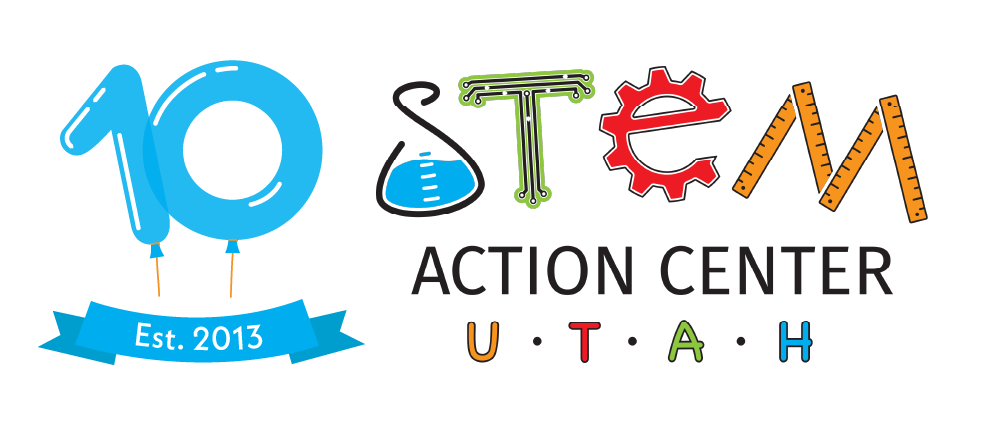Recommended Reading
Children’s Books
A Computer Called Katherine: How Katherine Johnson Helped Put America on the Moon by Suzanne Slade
The inspiring true story of mathematician Katherine Johnson–made famous by the award-winning film Hidden Figures–who counted and computed her way to NASA and helped put a man on the moon!
A Dream of Flight: Alberto Santos-Dumont’s Race Around the Eiffel Tower by Rob & Jef Polivka
A madcap adventure in this dynamic biography of Alberto Santos-Dumont, an inventor who risked everything for his dream of commercial flight. And sure enough, his successes and failures brought the world’s people closer together.
Buzzing with Questions: The Inquisitive Mind of Charles Henry Turner by Janice Harrington
The curiosity of the first African American entomologist Charles Henry Turner–a scientist who studied bugs–shines in this nonfiction picture book, which showcases his ideas and discoveries about ants, bees, and other insects.
How to Become an Accidental Genius by Frieda Wishinsky & Elizabeth MacLeod
Full of inspiring tales of famous and lesser-known inventors who have changed the world, from George Washington Carver, Mary Anderson (inventor of the windshield wiper) and inventor and actress Hedy Lamarr to Frank Epperson (of Popsicle fame) and Mary Sherman Morgan (The Woman Who Saved the U.S. Space Race).
Instructions not Included: How a Team of Women Coded the Future by Tami Lewis Brown & Debbie Loren Dunn
Click. Whir. Buzz. Not so long ago, math problems had to be solved with pencil and paper, mail delivered by postman, and files were stored in paper folders and metal cabinets. But three women, Betty Snyder, Jean Jennings, and Kay McNulty knew there could be a better way.
Secret Engineer: How Emily Roebling Built the Brooklyn Bridge by Rachel Dougherty
This is the story of Emily Roebling, the secret engineer behind the Brooklyn Bridge.
Young Adult Novels
Adult Fiction
Apollo 8: The Thrilling Story of the First Mission to the Moon by Jeffrey Kluger
In August 1968, one short year after three astronauts had burned to death in their spacecraft, NASA decided that it would launch humankind's first flight to the moon. Sixteen weeks later, Frank Borman, Jim Lovell, and Bill Anders were aboard the first manned spacecraft to depart Earth's orbit, reach the moon, and return safely to Earth, delivering a tear-inducing Christmas Eve message along the way.
The Art of Sound: A Visual History for Audiophiles by Terry Burrows
The Gramophone Company and The Columbia Phonograph Company merged in 1931 to become EMI: The Apple of its day. Organized chronologically, this richly illustrated resource tells the incredible story of the development of sound recording, and it showcases specially commissioned photography of the beautiful, iconic, and rarely seen objects housed within the diverse collections of the EMI Archive Trust.
Audubon: On the Wings of the World by Fabien Grolleau
At the start of the nineteenth century, John James Audubon embarked upon an epic ornithological quest across America with nothing but his artist's materials, an assistant, a gun, and an all-consuming passion for birds. This beautiful volume tells the story of an incredible artist and adventurer: one who encapsulates the spirit of early America when the wilderness felt limitless and was still greatly unexplored. Based on Audubon's own retellings, this embellished version of his travels captures the wild and adventurous spirit of a truly exceptional naturalist and painter.
On Trails: An Exploration by Robert Moor
In 2009, while thru-hiking the Appalachian Trail, Robert Moor began to wonder about the paths that lie beneath our feet: How do they form? Why do some improve over time while others fade? What makes us follow or strike off on our own? Moor has the essayist’s gift for making new connections, the adventurer’s love for paths untaken, and the philosopher’s knack for asking big questions. With a breathtaking arc that spans from the dawn of animal life to the digital era, On Trails is a book that makes us see our world, our history, our species, and our ways of life anew.
The Paper Zoo: 500 Years of Animals in Art by Charlotte Sleigh
As children, our first encounters with the world’s animals do not arise during expeditions through faraway jungles or on perilous mountain treks. Instead, we meet these creatures between the pages of a book, on the floor of an obliging library. Down through the centuries, illustrated books have served as our paper zoos, both documenting the world’s extraordinary wildlife in exquisite detail and revealing, in hindsight, how our relationship to and understanding of these animals have evolved over time. In this stunning book, historian of science Charlotte Sleigh draws on the ultimate bibliophile’s menagerie—the collections of the British Library—to present a lavishly illustrated homage to this historical collaboration between art and science.
We Have No Idea: A Guide to the Unknown Universe by Jorge Cham & Daniel Whiteson
PHD Comics creator Jorge Cham and particle physicist Daniel Whiteson have teamed up to spelunk through the enormous gaps in our cosmological knowledge, armed with their popular infographics, cartoons, and unusually entertaining and lucid explanations of science. In We Have No Idea, they explore the biggest unknowns in the universe, why these things are still mysteries, and what a lot of smart people are doing to figure out the answers (or at least ask the right questions).
Annihilation (series) by Jeff VanderMeer
Area X has been cut off from the rest of the world for decades. Nature has reclaimed the last vestiges of human civilization. The first expedition returned with reports of a pristine, Edenic landscape; the second expedition ended in mass suicide, the third in a hail of gunfire as its members turned on one another. The members of the eleventh expedition returned as shadows of their former selves, and within weeks, all had died of cancer. In Annihilation, the first volume of Jeff VanderMeer’s Southern Reach Trilogy, we join the twelfth expedition.
Carbon Diaries (series) by Saci Lloyd
It’s January 1st, 2015, and the UK is the first nation to introduce carbon dioxide rationing in a drastic bid to combat climate change. As her family spirals out of control, Laura Brown chronicles the first year of rationing with scathing abandon.
Adult Nonfiction
The Art & Science of Ernst Haeckel by Ernst Haeckel
Ernst Haeckel (1834-1919) was a German-born biologist, naturalist, evolutionist, artist, philosopher, and doctor, who spent his life researching flora and fauna from the highest mountaintops to the deepest ocean. In this book, we celebrate the scientific, artistic, and environmental importance of Haeckel s work, with a collection of prints from several of his most important tomes on marine biology, including Die Radiolarien, Monographie der Medusen, Die Kalkschwamme: Eine Monographie, and Kunstformen der Natur. At a time when biodiversity is increasingly threatened by human activities, the book is at once a visual masterwork, an underwater exploration, and a vivid reminder of the precious variety of life.
Beautiful Brain: The Drawings of Santiago Ramon y Cajal by Larry W. Swanson
At the crossroads of art and science, Beautiful Brain presents Nobel Laureate Santiago Ramón y Cajal’s contributions to neuroscience through his groundbreaking artistic brain imagery.
Foolproof, and Other Mathematical Meditations by Brian Hayes
Brian Hayes wants to convince us that mathematics is too important and too much fun to be left to the mathematicians. Foolproof, and Other Mathematical Meditations is his entertaining and accessible exploration of mathematical terrain both far-flung and nearby, bringing readers tidings of mathematical topics from Markov chains to Sudoku. Hayes, a non-mathematician, argues that mathematics is not only an essential tool for understanding the world but also a world unto itself, filled with objects and patterns that transcend earthly reality. In a series of essays, Hayes sets off to explore this exotic terrain and takes the reader with him.
Lumia: Thomas Wilfred and the Art of Light by Keely Orgeman
Lumia presents a long-overdue reevaluation of the groundbreaking artist Thomas Wilfred (1889–1968), whose unprecedented works prefigured light art in America. As early as 1919, many years before the advent of consumer television and video technology, Wilfred began experimenting with light as his primary artistic medium, developing the means to control and project unique compositions of colorful, undulating light forms, which he referred to collectively as lumia. Manifested as both live performances on a cinematic scale and self-contained structures, Wilfred’s innovative displays captivated audiences and influenced generations of artists to come. This publication, the first dedicated to Wilfred in over forty years, draws on the artist’s personal archives and includes a number of insightful essays that trace the development of his work and its relation to his cultural milieu. Featuring a foreword by the celebrated artist James Turrell, Lumia helps to secure Wilfred’s rightful place within the canon of modern art.
Paleoart: Visions of the Prehistoric Past, 1830-1980 by Zoe Lescaze
It was 1830 when an English scientist named Henry De la Beche painted the first piece of paleoart, a dazzling, deliciously macabre vision of prehistoric reptiles battling underwater. Since then, artists the world over have conjured up visions of dinosaurs, woolly mammoths, cavemen, and other creatures, shaping our understanding of the primeval past through their exhilarating images. In this unprecedented new book, writer Zoe Lescaze and artist Walton Ford present the astonishing history of paleoart from 1830 to 1990. These are not cave paintings produced thousands of years ago, but modern visions of the prehistory: stunning paintings, prints, drawings, sculptures, mosaics, and murals that mingle scientific fact with unbridled fantasy.
The Sun by Leon Golub
It’s a good story: we are made of matter like that we also find in the stars. Essential to our planet’s existence, the Sun—our nearest star––is also the most fascinating object humans have ever adored, literally the difference between day and night. But getting beyond these basic perceptions requires scientific understanding. What, for instance, is the sun made of? Why does it burn so brightly? How long will it last? This book not only answers these questions but also tells the story of how we came to know—not merely behold—the grandest entity in our sky.

